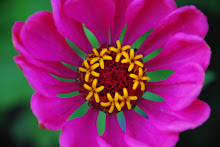Greetings gardening friends!
Perhaps you have heard about fall planting cover crops in your edible garden to grow over the winter. Wondering what a cover crop is and how you can utilize it as an urban gardener? Well, let's dig in!
A cover crop is a fast growing crop that is planted primarily to keep the soil covered for a short period of time, not for edible use. When you are ready to once again plant your garden with edible crops, the cover crop is tilled into your soil to serve as a “green manure” or added to your home compost bin. This process of turning the spent cover crop plant matter into your garden soil adds large quantities of organic matter to your soil. All of the nutrients contained in the cover crop plants are retuned to the soil. Organic matter will improve your soil texture and stabilize moisture content. Cover crops are great organic garden helpers!
Fall planting of cover crops in your edible garden can prevent weeds, erosion, and nutrient leaching. Some cover crops can even boost nitrogen in your soil! Legume family cover crops like Austrian peas, crimson clover, Dutch white clover, and fava bean are hosts to nitrogen-fixing bacteria in the soil. These bacteria extract nitrogen from the air and convert it into a form that can be used by plants. Planting legume cover crops in your edible garden helps return nitrogen to the soil!
And if that weren’t enough reasons to plant cover crops, some like fava bean and oilseed radish have long tap roots that can assist in breaking up compacted clay soil for you. Plant them in the fall and by spring the taproots have done their job loosening your garden soil.
Farmers have benefited from the planting of cover crops for hundreds of years. Cover crops can be successfully utilized on a small scale for the urban gardener. The ideal time to fall plant cover crops in the Portland edible garden is September into early October. This timing ensures warm enough temperatures for ideal germination.
There are several cover crop options to consider: annual ryegrass, Austria peas, buckwheat, common vetch, crimson clover, dutch white clover, fall cereal rye, fava bean, mustard, oats, and oilseed radish. In my experience anything in the grass family (ryegrass, buckwheat, cereal rye) develops such a dense root mass they were virtually impossible for me to dig by hand out of my community garden. They almost require a rototiller which I don’t recommend and isn’t a consideration for raised bed gardens. I have had really good success with crimson clover, fava bean, and oilseed radish in my small scale in-ground and raised bed gardens.
Crimson Clover: Plant seeds September to mid-October in the Portland edible garden. Crimson clover thrives in all types of soil and in full or partial sun. It needs moderate drainage. It quickly forms a dense green mat by winter. In June the red flowers are a favorite of bees and beneficial bugs, though I usually have removed my crimson clover by then for spring planting edibles. Crimson clover is a favorite of mine because of it’s tender vegetation which makes it super easy to pull and turn under into my raised bed soil. Bonus, crimson clover is in the legume family and is a nitrogen fixing plant!
Fava bean: Plants seeds in September through October. This cover crop is another member of the legume family, related to peas, with nitrogen-fixing power. Fava beans grow tall up to 6 feet by May. Left to maturity they are magnificent strong plants with striking white and black flowers. Fava beans are winter hardy to 10 degrees and can tolerate poor draining wet winter soil. They have long taproots the deeply penetrate hard garden soil loosening it up for spring gardening. Fava beans are sturdy plants and take a little more work than soft crimson clover to remove from the garden and turn under. But, I don’t find them difficult and they are well worth a turn in your edible garden.
Oilseed radish: Plant seeds September through October. Oilseed radish is a member of the brassica family and needs to be considered in crop rotation planning. It is a fast growing cover crop with a long taproot. Its taproot is very helpful breaking up and aerating compacted clay soils. Oilseed radish is not winter hardy and a hard frost will kill the plant while the deep taproot slowly decomposes adding organic matter back to the garden soil.
The second week of October is just ending, so now is the time to get planting some cover crops! Please let me know if you have any questions.
Happy gardening,
Jolie
Friday, October 13, 2017
Subscribe to:
Post Comments (Atom)










No comments:
Post a Comment